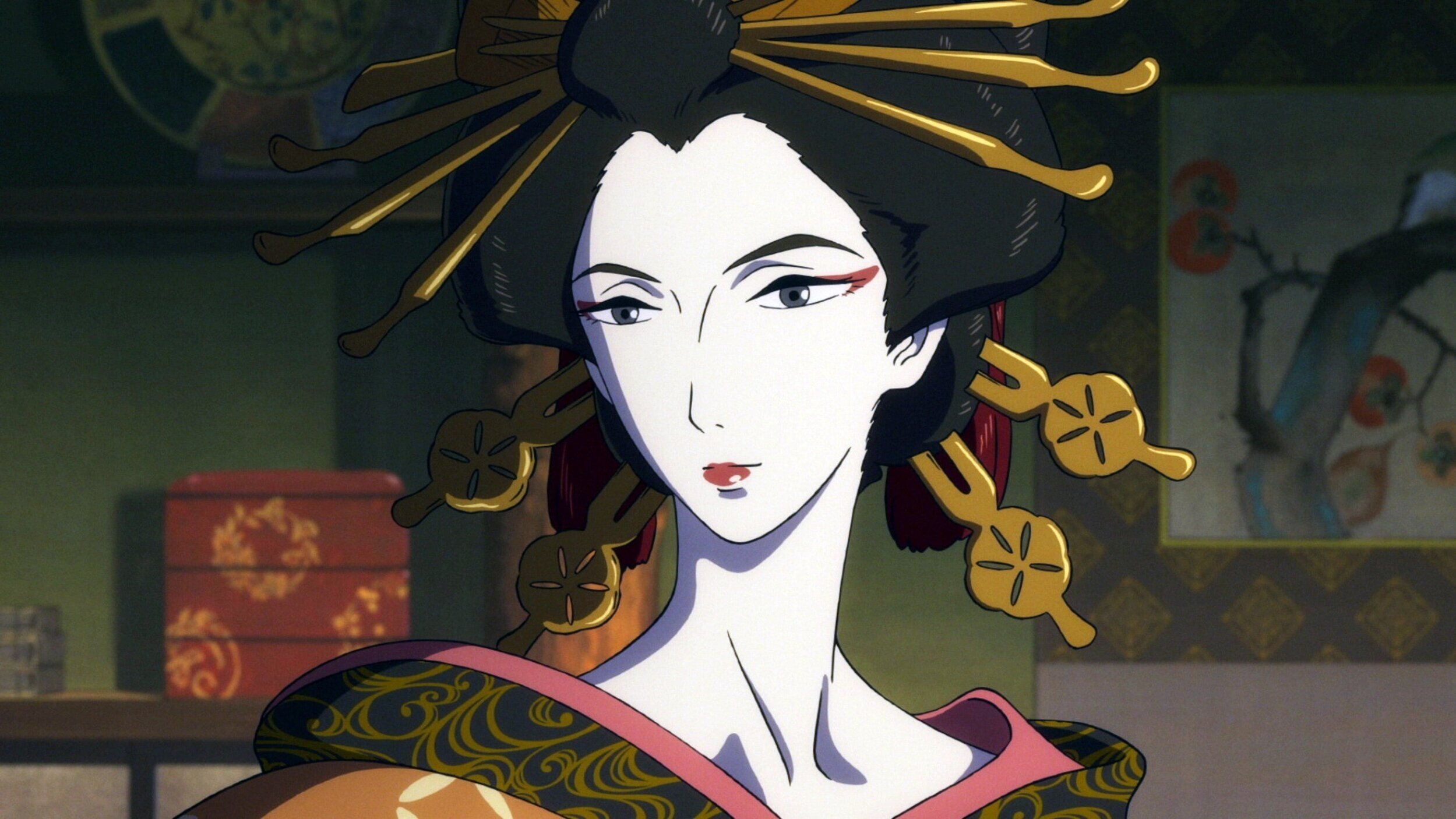Miss Hokusai
19th Century Japan is the background to this animated film telling the story of a female artist of quality whose fame has been eclipsed by that of her father.
Japanese animators are notably adventurous when choosing their subject matter, a fact that was emphasised when the famed Miyazaki Hayao opted to bow out with The Wind Rises, a film about a real-life designer of fighter planes used in the Second World War. Now Hara Keiichi, whose award-winning work has not been seen in our cinemas before, brings us a haunting feature about a 19th century artist adapted from a manga, Sarusuberi created by a woman, the late Sugiura Hanako.
Although the film’s assistant director was Sato Masako who worked on The Tale of the Princess Kaguya, this film eschews the visual delicacy of that work for a bolder style but one in which the characters come fully alive. The setting is Tokyo, or Edo as it then was, in the year 1814 and a central figure, seen here in mid-life, is Hokusai, the famed painter and printmaker whose Great Wave is recalled in one scene here. However, as the title indicates, the focus in this film is first and foremost on his daughter O-Ei, herself an artist of distinction. Hokusai, twice married, had other daughters too and one of them, O-Nao, also plays a crucial role in this film as it portrays the world of Hokusai, his family and friends, many of the latter being fellow artists.
In part Miss Hokusai offers episodes that illustrate the times and these range from a woman’s bizarre belief that a painting in her house could be possessed by devils to scenes in a brothel which link with the fact that the work of both Hokusai and O-Ei extended to erotica. But what shapes the film is its portrait of O-Ei as a strong woman living in an era in which men dominated but who nevertheless made her own way by creating an independent life style. As such, she will have special appeal to present day feminists as did the heroine of last year’s A Little Chaos but, whereas Kate Winslet’s garden designer for Louis XIV never existed, O-Ei did, even if relatively little is known about her. In consequence Miss Hokusai has to embroider the truth to make its effect, but it does so in a wholly acceptable way including its portrayal of the sister O-Nao as someone who was born blind.
Although it is linked to the fact that Sugiura would listen to rock music when creating her mangas, Hara’s decision to feature the loudest of pop sounds on the track as the film opens may also be attributed to his stated desire to make it clear that this is not just a typical period drama. However, taken together with some opening dialogue which, judging by the subtitles, lacks a period flavour, this gambit seems to me to be seriously ill-judged and likely to deter many who would find the film highly engaging. That’s a pity because I have seldom seen a film that to my mind begins so badly and turns out so splendidly (the music only reverts to this style at the close). What is absolutely special is the treatment of the scenes showing O-Ei’s bond with her blind sister. Although Miyazaki’s The Wind Rises was sublime in the air, it became grossly sentimental and mawkish on the ground when dealing with its hero’s personal life. In wonderful contrast, the scenes with O-Nao are remarkably sensitive including a magical episode in the snow and a truly touching memory of her at the close. Hara’s film may not be exactly history but, despite its opening music, it is a fascinating recreation of a past time and a past place and a persuasive account of a female artist undoubtedly worth remembering.
MANSEL STIMPSON
Featuring the voices of Watanabe Anne, Matsushige Yutaka, Hamada Gaku, Kora kengo, Miho Jun, Shimizu Shion, Tsutsui Michitaka, Aso Kumiko and Tatekawa Danshun.
Dir and Storyboard Hara Keiichi, Screenplay Maruo Miho from the manga Sarusuberi by Sugiura Hinako, Ph Tanaka Koji, Art Dir Ono Hiroshi, Ed Nishiyama Shigeru, Music Fuuki Harumi, Animation Production I.G.
Asahi Shimbun/Sunrise/Transcosmos etc.-Anime Ltd.
90 mins. Japan. 2015. Rel: 5 February 2016. Cert. 12A.


